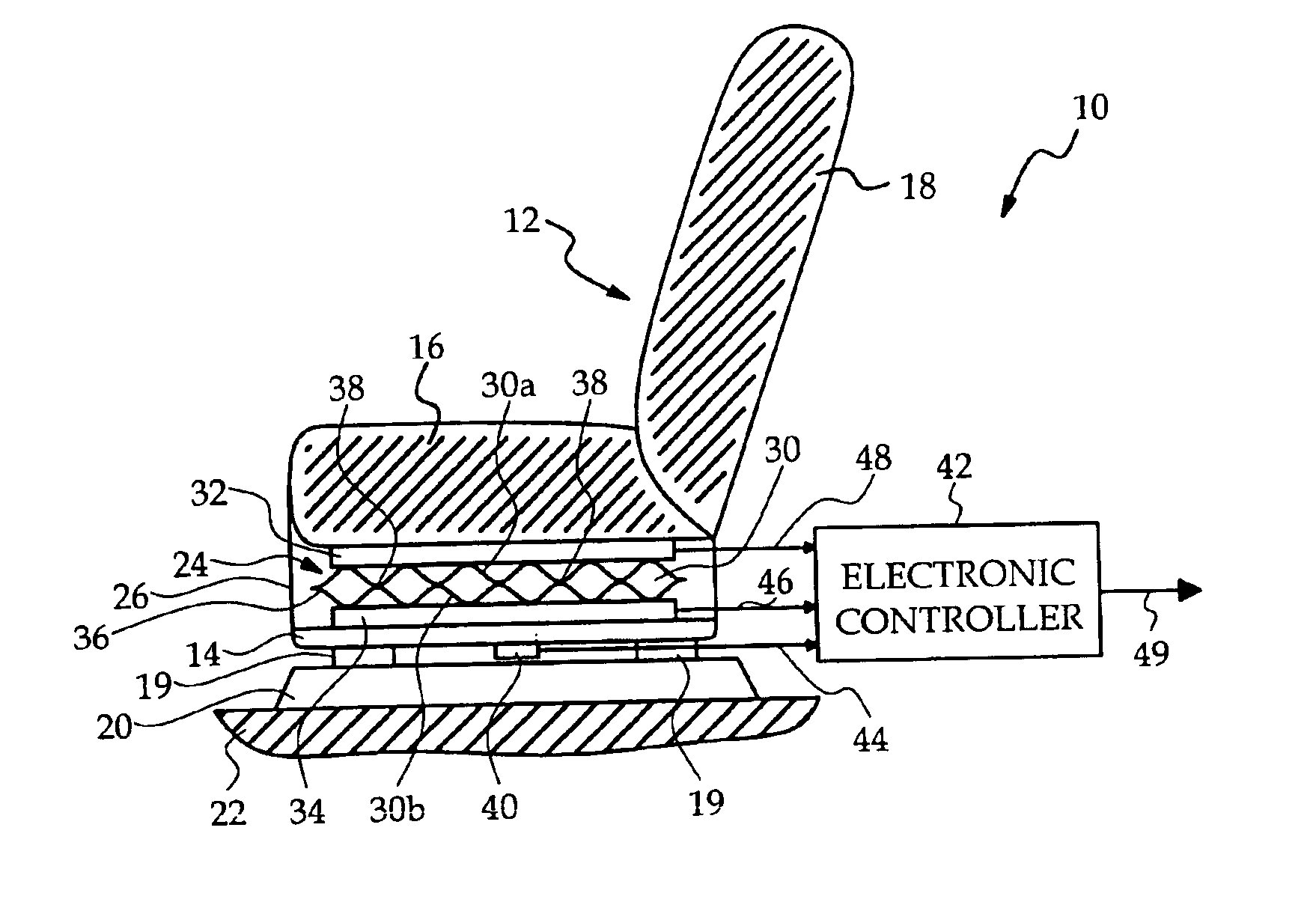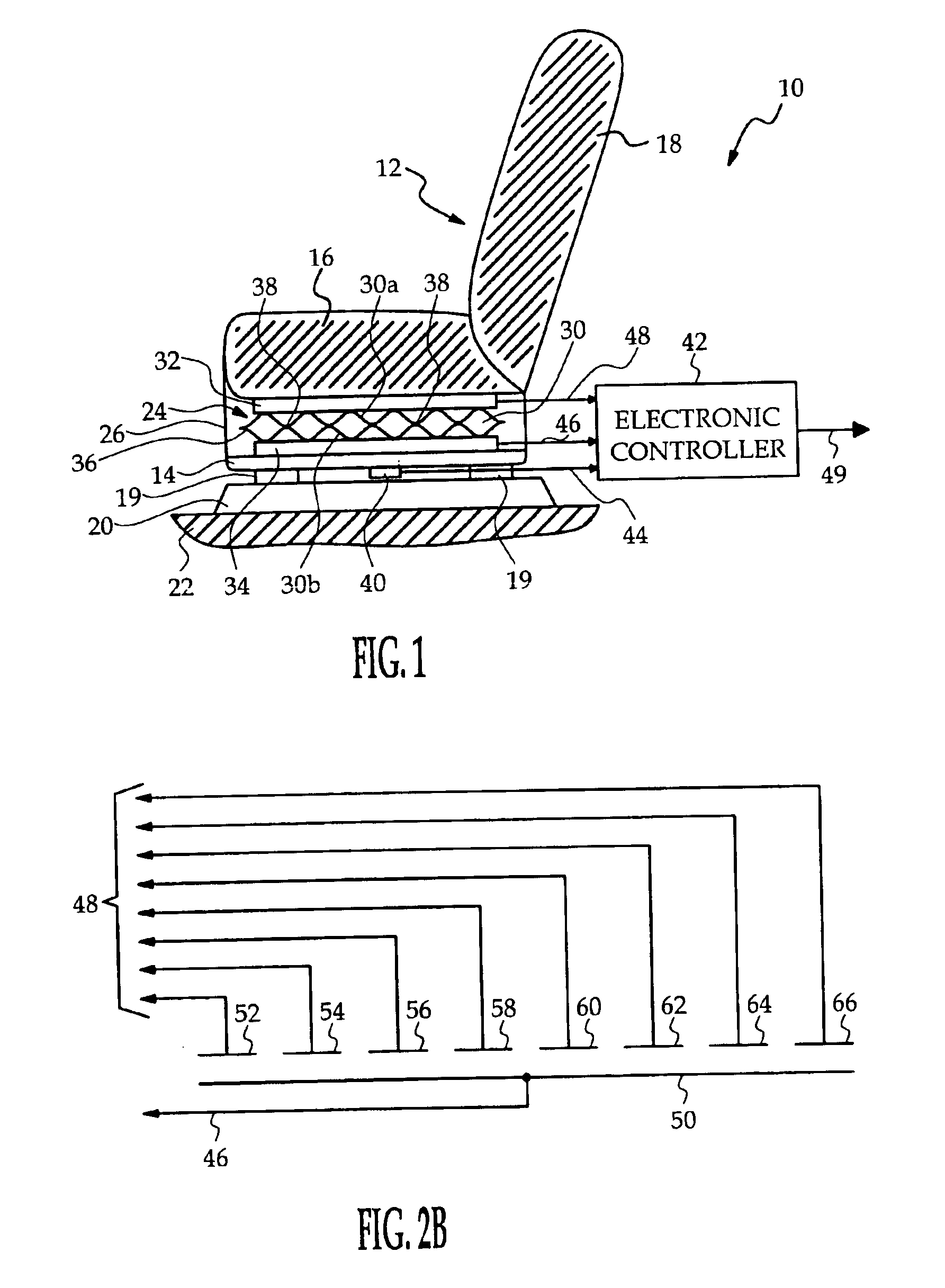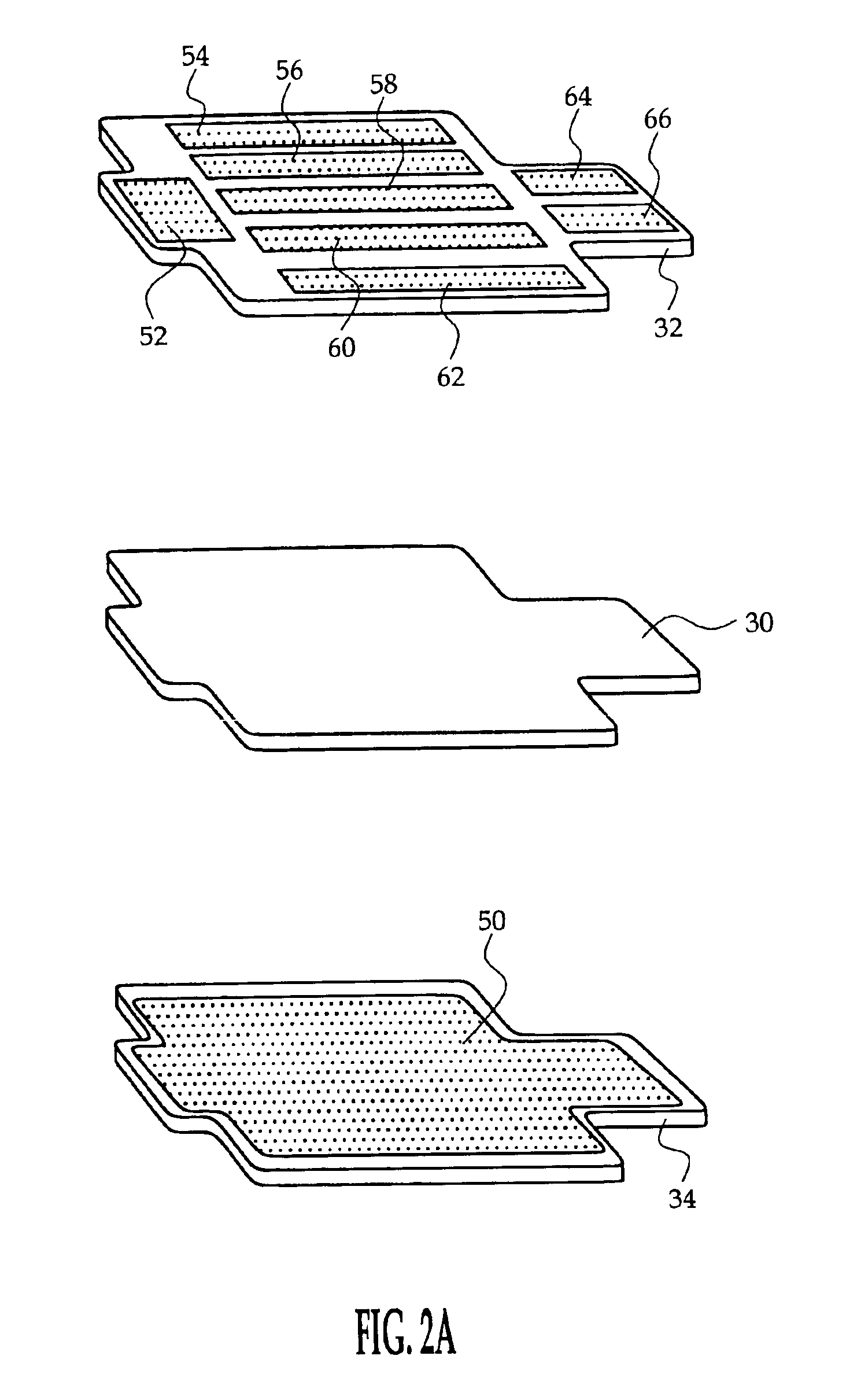Fluid filled seat bladder with capacitive sensors for occupant classification and weight estimation
a capacitive sensor and seat bladder technology, applied in the direction of process and machine control, pedestrian/occupant safety arrangement, instruments, etc., can solve the problems of increasing the number of bladder designs and the general cost prohibitive use of multiple pressure sensors, and achieve the effect of increasing the capacitance of each sensor and improving occupant classification
- Summary
- Abstract
- Description
- Claims
- Application Information
AI Technical Summary
Benefits of technology
Problems solved by technology
Method used
Image
Examples
first embodiment
[0015]FIGS. 2A and 2B depict the invention in which the upper and lower pads 32, 34 are utilized as substrates for supporting the capacitive sensor elements. As seen in the exploded view of FIG. 2A, the lower pad 34 supports a ground plane film 50 covering substantially the entire area beneath the bladder 30, and the upper pad 32 supports a number of regional metal films 52, 54, 56, 58, 60, 62, 64, 66 that overlie the ground plane plate 50. The various metal films 50, 52, 54, 56, 58, 60, 62, 64, 66 may be formed of thin copper foil, for example, and adhered to the respective pads 32, 34. Also, the plates 52, 54, 56, 58, 60, 62, 64, 66 may be formed on the underside of the upper pad 32 instead of the top side as shown in FIG. 2A.
[0016]The various films 50, 52, 54, 56, 58, 60, 62, 64, 66 and intervening material of bladder 30 and the fluid contained therein form an array of capacitive sensing elements that are used to detect deformation of the bladder 30 due to occupant weight applied...
second embodiment
[0017]FIGS. 3A and 3B depict the invention in which metal films defining an array of two capacitive sensing elements are formed on the surfaces of the upper and lower bladder layers 30a and 30b inside the peripheral weld 36. In the illustrated embodiment, the ground plane film 50 is formed on the interior surface of lower bladder layer 30b, and two metal films 70, 72 are formed on the interior surface of upper bladder 30a. The ground plane film is accessed by the conductor strips 74 and 76 formed on the respective bladder tabs 78 and 80, and the metal films 70 and 72 are accessed by the respective conductor strips 82 and 84 formed on the bladder tabs 86 and 88, respectively. The metal films 70 and 72 are disposed on the right and left halves of bladder 30, and each comprises a number of generally parallel and laterally extending fingers 70a, 72a. Additionally, the upper and lower layers 30a, 30b are intermittently joined by welding between the films 70, 72 and between the fingers 70...
PUM
 Login to View More
Login to View More Abstract
Description
Claims
Application Information
 Login to View More
Login to View More - R&D
- Intellectual Property
- Life Sciences
- Materials
- Tech Scout
- Unparalleled Data Quality
- Higher Quality Content
- 60% Fewer Hallucinations
Browse by: Latest US Patents, China's latest patents, Technical Efficacy Thesaurus, Application Domain, Technology Topic, Popular Technical Reports.
© 2025 PatSnap. All rights reserved.Legal|Privacy policy|Modern Slavery Act Transparency Statement|Sitemap|About US| Contact US: help@patsnap.com



